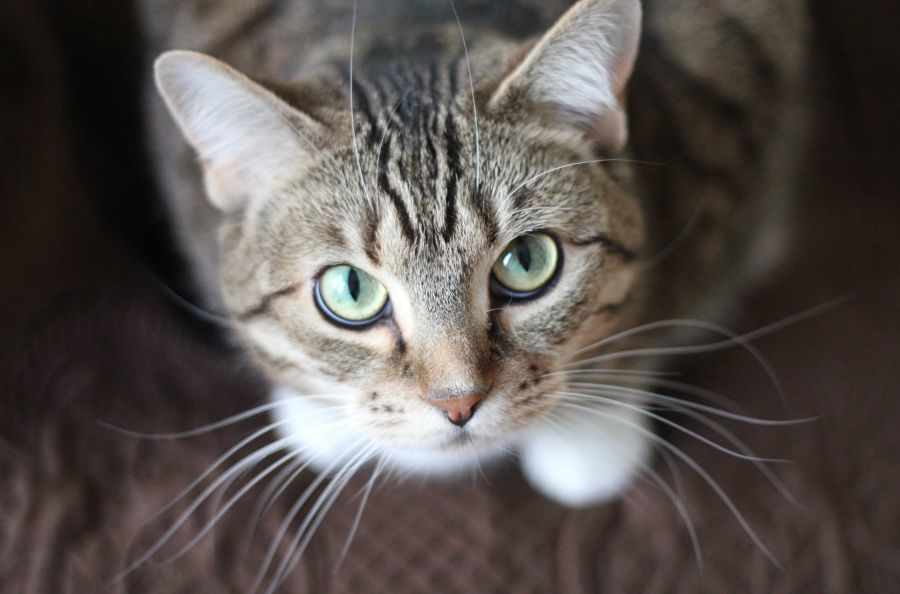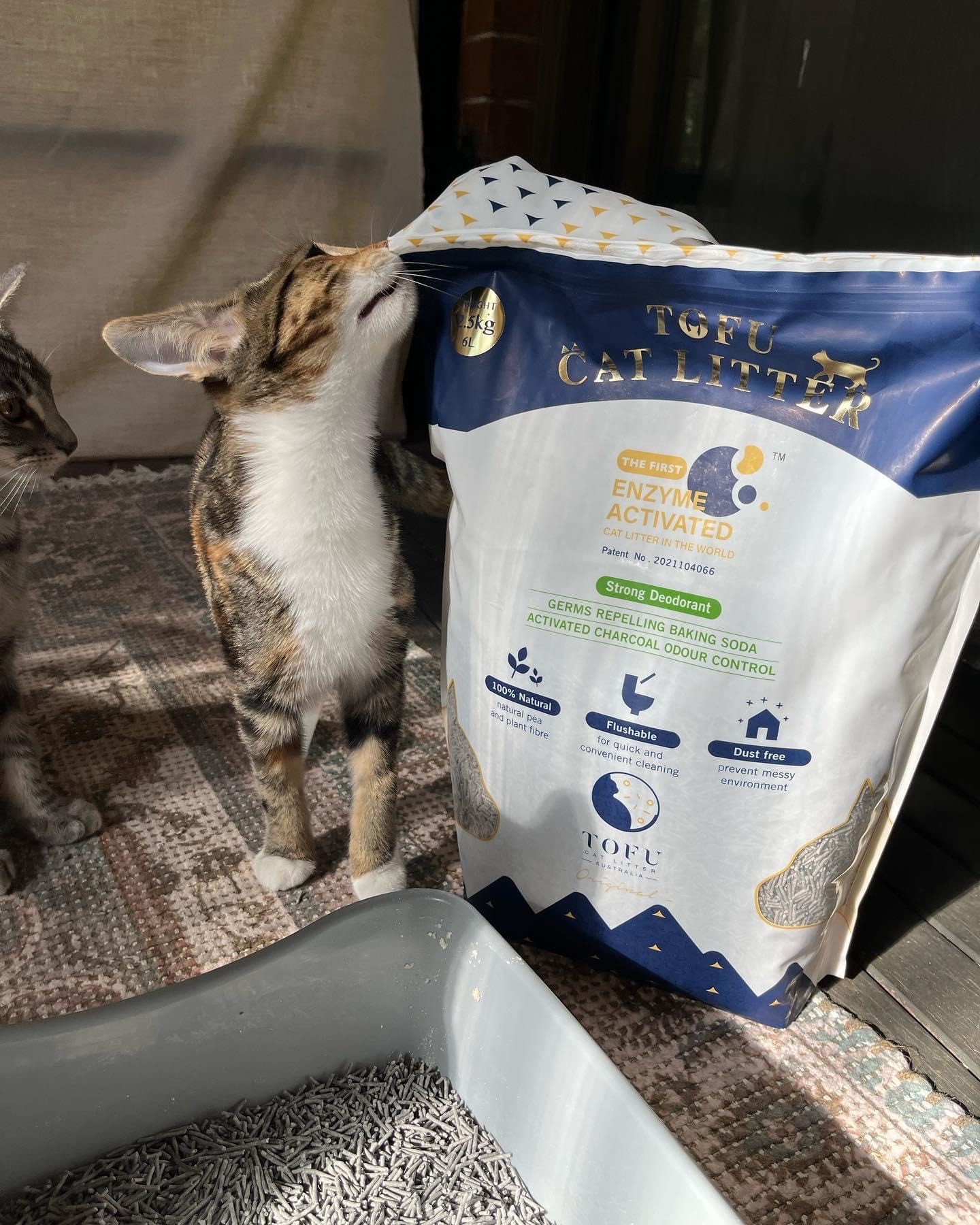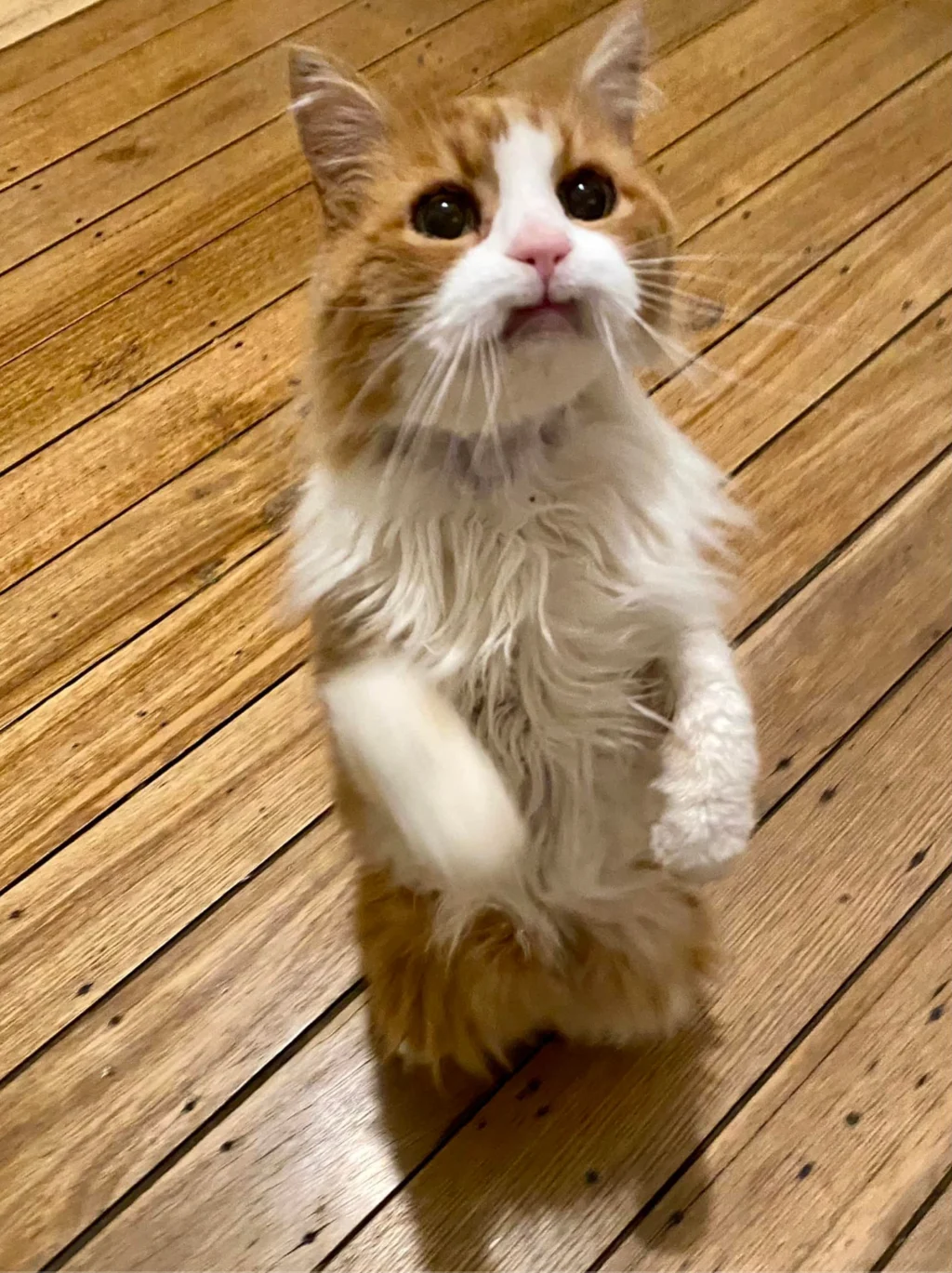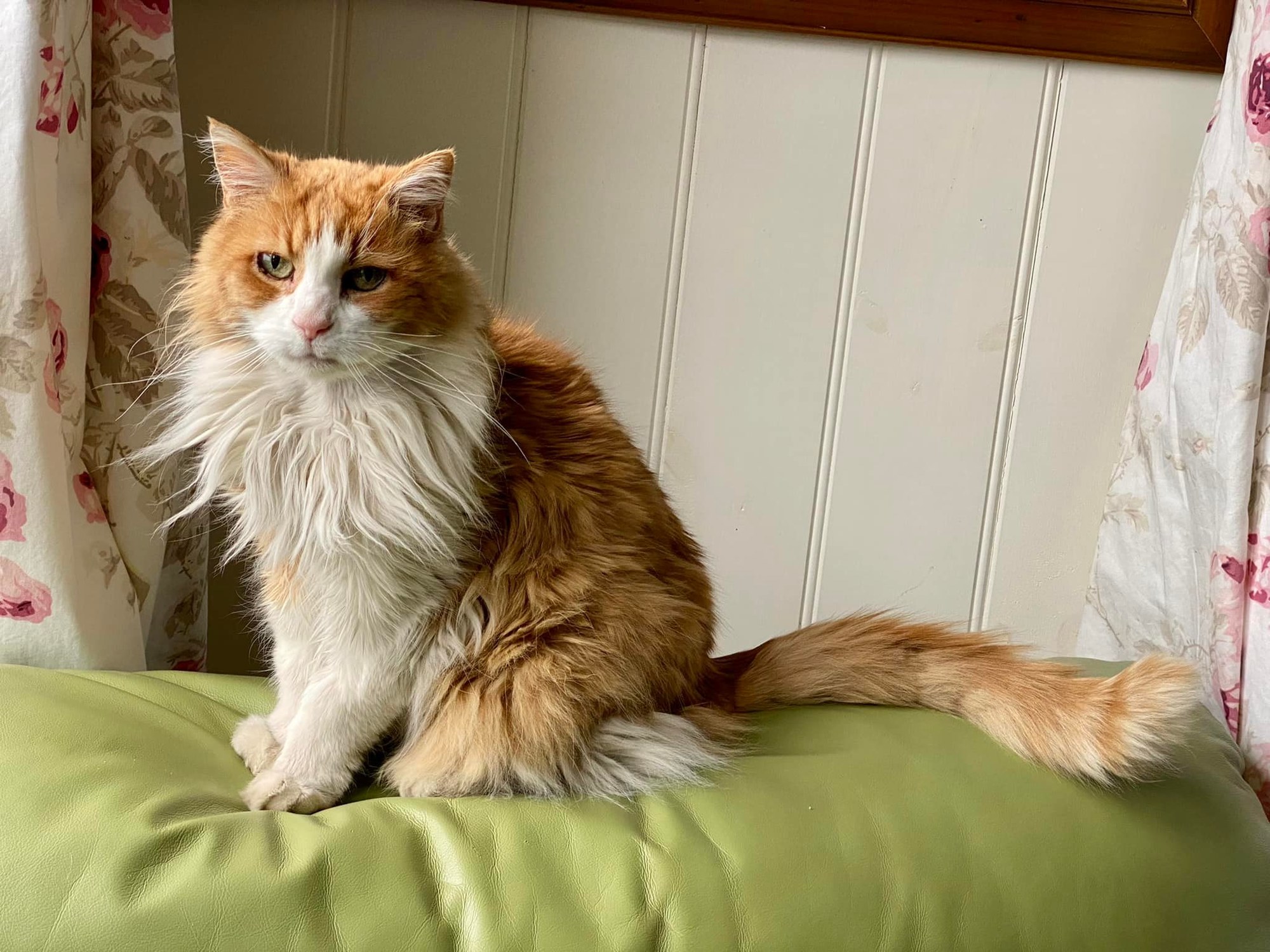 You've adopted a dog - here's what to expect post-adoption
Read more
You've adopted a dog - here's what to expect post-adoption
Read more
Last updated: 30 Oct, 2023
Published on: 7 Jun, 2023
Why your cat isn’t using their litterbox 😾

Does your cat have a habit of not using their designated toileting area? Or did they decide one day that it’s no longer up to scratch, and they’d rather do their business elsewhere?
There are several reasons why your kitty may be showing some, ahem, undesirable litterbox behaviours, like choosing to do their business on the carpet or right next to instead of inside their litterbox. It can be related to stress, medical issues, or their set-up just isn’t right for them!
We chatted with PetRescue Co-Founder and resident cat behaviour expert Vix, about what your cat is trying to communicate to you and how to help.
Stress/Behaviour
It’s important to get down to the root cause of why your cat may suddenly have forgotten their manners when it comes to toileting. Recognising and managing stress factors is the best place to start, as it may not even be a litterbox problem at all but a stress issue. Reducing stress could mean the litterbox issue takes care of itself.
If there’s a new pet in the home, read some tips here for introducing your feline friend to a new cat or dog. It’s essential to ensure it’s a slow, gradual introduction, and they’re not just thrown into the deep end with this mysterious new housemate!
Similarly, if you’ve recently moved your catto into a new house, this can be very overwhelming and lead to them doing their business in undesirable places. Start with keeping them in one room of the house and gradually increase the space they have access to before they have free rein in this new environment. Jackson Galaxy’s ‘Basecamp’ video is a great resource to help keep your cat stress-free when moving house (or experiencing any kind of change!).
Medical Issues
If your furry pal is suddenly showing changes in their litterbox behaviour (such as randomly going on the carpet), it’s a good idea to visit the vet to rule out any potential medical issues. Stress can go hand in hand with urinary issues, like urinary tract infections, so it’s important to go in for a check-up. UTIs often lead to a cat associating the litterbox with pain, so they’ll find somewhere else to do their business.
For older cattos, sometimes arthritis can lead to pain when stepping on hard litter, which they’ll then avoid - so it’s best to get this checked out (and source some litter that’s softer on their little toe beans!).

Litterbox Set-Up Issues
Sometimes, the feng shui of your cat’s litterbox just isn’t right!
Many litterboxes are set up with humans in mind instead of what is best for cats. It can help to think about it from a cat’s perspective - would you want to do your business in a high-traffic area of the house where people are always walking past, near a loud washing machine, or next to where your snacks are kept?
Here are some tips to keep in mind when setting up your cat’s poo palace. It may involve some trial and error to get it just right.
-
Keep the litterbox away from the cat’s food and water
-
Try to set litterboxes up in quieter areas of the house where they can do their ones and twos in privacy (and peace!)
-
A general rule of thumb is to have one extra litterbox - so two for one cat, three for two cats, and so on.
-
It’s worth trying different types of litter to see what works best for your cat.
-
Where possible, pop litterboxes in different rooms - i.e. not all next to each other
-
Avoid litterboxes with hoods - they may be less offensive to the human eye, but can leave your catto feeling stressed, vulnerable and like they can’t escape any perceived threats.
-
Many litter trays are too small and uncomfortable - you could even purchase a larger box from a hardware store for them to use.
-
Try to scoop their poop out as soon as you see it in their litterbox, but only give it a proper clean and change over once a week with a gentle disinfectant, as cats like their own smell and it makes it feel like a safe place for them to go.
-
For this reason, it’s best to avoid anything scented in the litterbox, including liners (they also make scary scrunchy sounds!)
-
Indoor/outdoor kitties may also appreciate some dirt sprinkled into their litterbox for an authentic outside toilet experience.
In a nutshell, it’s about trying different things until you work out the best combination for your furry pal. Read on for some examples of trial and error in the litterbox department!

“My cat Kofi started weeing on the bath mats and the rug! It was totally out of the blue and really annoying as, in my mind, he had three perfectly good litter boxes to use. But I did a bit of detective work, trying to put myself into the mind of a cat 😼 and realised there were two problems.
The litter boxes were lined up by a glass door, and at night, a neighbouring cat (or possibly a possum) was making the location ‘unsafe’ in his eyes. And he didn’t like to use the litter box that his brother Felix had used. Felix himself preferred one litterbox for wee, and one for poo, which meant the options for Kofi were limited.
Solution: An extra litter box and moving them into four separate quiet locations, which may seem like a pain, but much preferable to buying new rugs every week! (Also, hang up the bath mat!)” - Vix
If you’ve been following PetRescue on socials, you may have come across adorable senior lady Peaches (pictured below). This sweet retiree, who was in the care of Second Chance Animal Rescue, was searching for a calm and quiet home to move into, and she had a list of strict requirements when it came to her litterboxes! An update: Peaches has since found a wonderful new home to retire in!


Number one on Peaches’ list: Litterboxes! Not one. Three at a minimum, spaced exactly one metre apart in a quiet room. They need to be of a decent size and cleaned, ideally straight away, because she can't flush the toilet herself, and she does not like dirty litter trays. If you don't provide this, Peaches will pee right next to whatever you give her - or maybe on your bed! If you don't own a tape measure, we suggest you buy one!
- Peaches' PetRescue profile
Peaches’ foster carer, Nell Thompson (from G2Z) told us a bit more about Peaches’ requirements.
“Peaches toileting issues were complex. She had a lot of compounding issues, and so it was difficult to nail what the issue was exactly. Her medical issues (kidney issues, arthritis and mobility problems, hyperthyroid and frequent urinary tract infections), previous lifestyle (possible lack of litter training), dislike of the resident cat and dogs here etc may have all contributed to the problem.
We addressed it via a step-wise approach, starting with preference for the litter box itself (size, depth etc), then added litter boxes to the space. Ideally, we would have also done other things that weren’t possible due to the other animals in the house, ie more litter boxes in other locations etc. We then added a motion-activated camera so that we could actually see what her behaviour was leading up to and after toileting. Then we trialled a number of different litters at different depths, and on and on it went. She was pretty stable in her litter tray use when she was adopted but would start to wobble when she had a UTI, which is very common.”
Our pet’s funny habits usually mean they’re trying to tell us something, and investigating and getting to the bottom of any challenging behaviours helps to strengthen our bond with them 💚
Further reading:
Litterbox Problems in Shelter Cats
Thanks to our friends at Pet Circle if you enquire about a pet via PetRescue, you can get $25* off when you spend more than $50 on pet supplies and a free Vet Pet Plan. Learn more.
PetRescue and Pet Circle are working together to create a better world where every pet is safe and loved as a valued member of the family.
Image credits: Pexels via Krysten Merriman, Tofu Cat Litter Australia donation, via Inner City Strays.













































